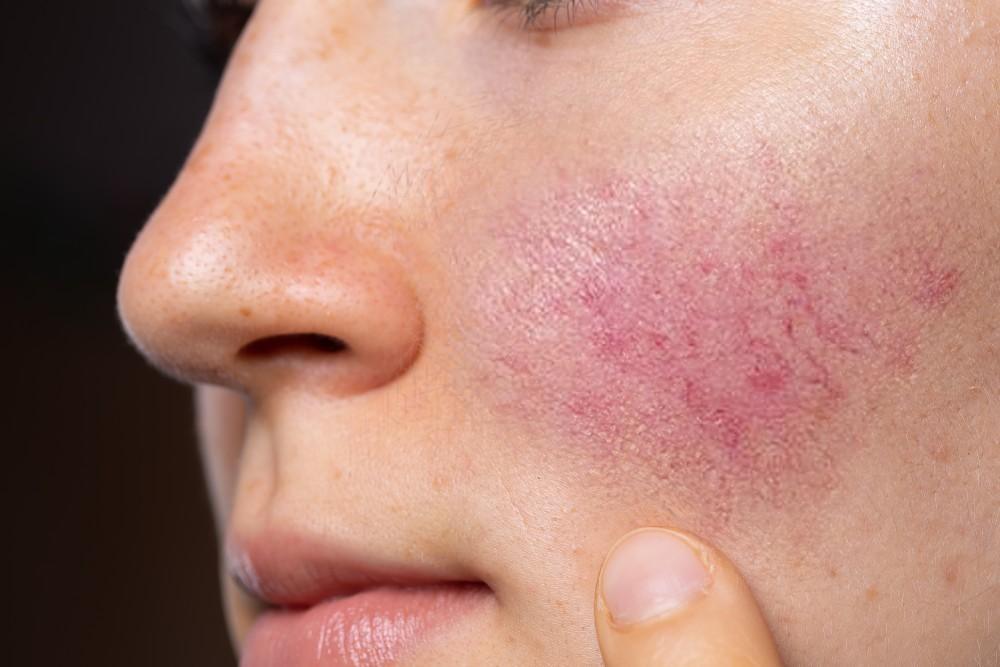Rosacea is a chronic skin condition that can cause redness, bumps, and visible blood vessels, primarily on the face. While the exact causes of rosacea remain unclear, certain triggers are known to exacerbate symptoms. Understanding these triggers and how to manage them is key to maintaining healthy, balanced skin. In this post, we’ll explore the primary causes of rosacea and provide tips for identifying and managing its symptoms.
Understanding the Primary Causes of Rosacea
Although the root cause of rosacea is not fully understood, a combination of genetic and environmental factors is believed to contribute to its development. Here are some of the top triggers to watch for:
1. Sun Exposure
One of the most common triggers for rosacea is prolonged sun exposure. UV rays can damage the skin barrier and cause inflammation, leading to flare-ups. Wearing broad-spectrum sunscreen and seeking shade during peak sun hours can help reduce your risk.
2. Dietary Factors
Certain foods and beverages, such as spicy foods, alcohol, and hot drinks, are known to trigger rosacea symptoms in many people. Keeping a food diary can help you identify patterns and avoid problem foods.
3. Stress and Emotional Changes
Stress is a well-known trigger for many chronic conditions, including rosacea. Emotional changes, such as anxiety or embarrassment, can also cause temporary redness and exacerbate symptoms. Incorporating stress-reduction techniques like meditation or yoga into your routine can help manage this trigger.
4. Skin Sensitivities
Harsh skincare products, particularly those with fragrances or alcohol, can irritate rosacea-prone skin. Switching to gentle skincare for rosacea designed to soothe and protect sensitive skin can minimize irritation and inflammation.
Identifying and Managing Rosacea Symptoms
Once you’ve identified your triggers, managing rosacea becomes more straightforward. Here are some practical steps to keep symptoms under control:
1. Establish a Gentle Skincare Routine
Using the right products is crucial for calming irritated skin. A moisturizer for rosacea can provide the hydration and barrier support your skin needs to stay healthy. Look for formulations with calming ingredients like ceramides or niacinamide, which are known to reduce redness and irritation.
2. Protect Your Skin
Daily sun protection is essential for managing rosacea. Opt for mineral-based sunscreens with zinc oxide or titanium dioxide, which are less likely to cause irritation. Wearing a wide-brimmed hat and avoiding direct sun exposure during peak hours can also help.
3. Monitor Lifestyle Triggers
Tracking your diet, stress levels, and environmental exposure can help you identify patterns and avoid common triggers. Reducing your intake of known irritants, such as alcohol or spicy foods, may significantly improve your symptoms.
4. Focus on Overall Health
Healthy skin starts with a healthy body. Supporting your scalp and hair health with a hair growth serum for women can complement your rosacea care routine, ensuring you maintain a balanced approach to overall beauty and wellness.
5. Consult a Professional
If symptoms persist despite your best efforts, consider consulting a dermatologist. They can recommend advanced treatments, such as topical medications or laser therapy, to help control your rosacea more effectively.
Final Thoughts
Managing rosacea requires a proactive approach that includes understanding your triggers, using effective skincare for rosacea, and adopting a gentle, soothing routine. Incorporating products like a moisturizer for rosacea and monitoring your lifestyle habits can go a long way in reducing flare-ups. By taking a holistic approach that includes solutions like a hair growth serum for women, you can achieve healthier skin and hair while feeling more confident in your overall appearance.

